The Intricacies of Sling Shot Fishing Techniques
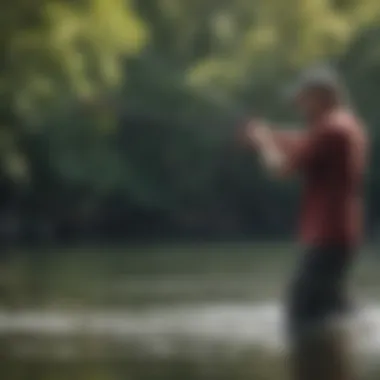
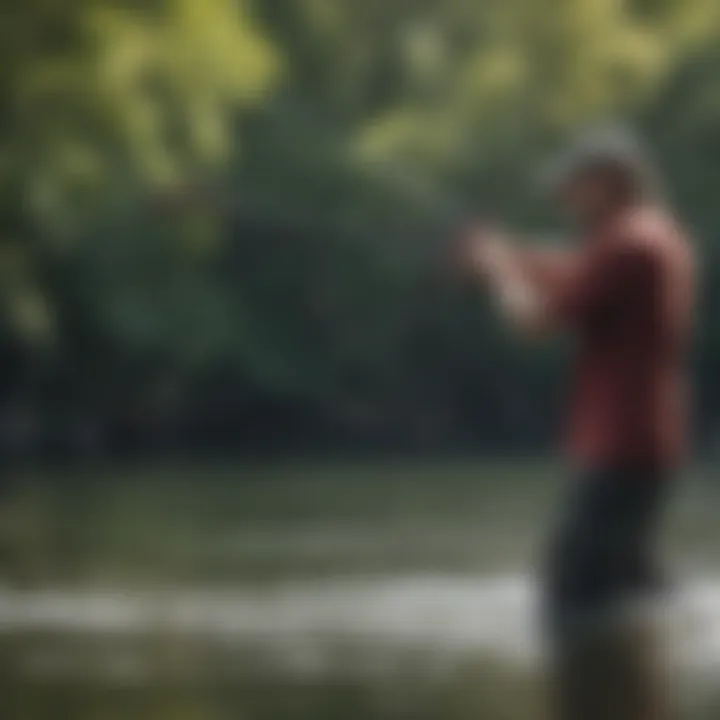
Intro
Sling shot fishing is like a fresh breeze in the wide world of angling. Unlike classic methods that have been around for centuries, this technique brings a modern twist to the old school. You're not just throwing a line into the water; you’re using a tool that combines precision and creativity, catering to both the sport and leisure aspects of fishing. It's a unique blend of skill and science that not only captures attention but also makes for an engaging experience on the water.
Through this article, we venture into the nitty-gritty of sling shot fishing, exploring the required mechanics, essential gear, and best practices, while paying heed to its ecological implications. The aim here is to educate and intrigue watersport enthusiasts who might have never considered this unconventional method before. Prepare yourself, because we are about to untangle the art and science behind fishing with a sling shot.
"Fishing is much more than the act of catching fish; it's also about skills, tactics, and being one with nature."
Techniques and Skills
Essential Techniques for Beginners
For those just starting their journey into sling shot fishing, several foundational techniques will set you on the right path. The first key is understanding the mechanics of the slingshot itself. How you grip and position your hands can greatly affect your accuracy. A consistent stance and firm but relaxed grip go a long way. Here are some crucial points to keep in mind:
- Stance: Feet shoulder-width apart, knees slightly bent, providing balance and strength.
- Aiming: Focus on your target before releasing; it might sound simple but locking in your aim can greatly enhance your precision.
- Release Mechanism: A smooth release is crucial. Jerking the slingshot can lead to erratic shots, so practice the feel of consistent pressure.
In addition to these fundamentals, practice is vital. Finding a safe and open area to hone your skills can be worthwhile. As you gain confidence, you can start adjusting your aim and distance to adapt to various situations and targets.
Advanced Skills for Experienced Watersport Enthusiasts
Once you're comfortable with the basics, moving into advanced techniques can elevate your game. Experienced anglers often delve into more specialized tactics. Consider these suggestions:
- Angle Adjustments: Altering the angle of your shot can determine how far and high your bait travels. Experiment with different angles to find what best suits each fishing scenario.
- Target Selection: Understanding the behavior of different fish species is crucial. They might be surface feeders requiring a different bait placement compared to those lurking deeper.
- Wind Considerations: Wind can affect your accuracy and distance. Learning how to compensate for wind conditions can significantly enhance your performance.
With time and dedication, you’ll find these advanced skills sharpen your overall fishing capabilities, turning moments of trial into triumph.
Equipment and Gear
Must-Have Gear for Each Watersport
Sling shot fishing requires specific gear that shouldn't be overlooked. Here’s a curated list of essential equipment:
- Quality Slingshot: Invest in a slingshot designed for fishing, as these typically have reinforced bands for heavier weights.
- Bait: Depending on your target species, different types of bait like small fish or artificial lures could be effective.
- Protective Wear: Don’t forget a good pair of gloves for safety and perhaps some polarized sunglasses to aid visibility on the water.
- Storage: A robust tackle box or dry bag is vital for organizing your tackle and tools.
Tips for Selecting the Right Equipment
Choosing the right gear can make or break your sling shot fishing experience. As a potential angler, keep the following tips in mind:
- Understand Your Needs: Different fishing environments demand varying types of equipment. Are you fishing in a calm lake or a rough river?
- Prioritize Quality: Spending a little more on a reliable slingshot is worth it in the long run. Quality gear contributes to performance and safety.
- Seek Feedback: Engaging with fellow anglers online—platforms like Reddit and fishing forums—can give valuable insights on what works best.
In sum, gearing up properly sets the stage for a more fruitful fishing adventure.
By blending traditional angling instincts with the art of sling shot fishing, you embark on a journey that is as much about the experience as it is about the catch.
Discovering the unique methods alongside the nuances of various settings enriches not just your skill but also your appreciation of the sport.
Understanding Sling Shot Fishing
Sling shot fishing stands out in the realm of angling due to its unique blend of art and science. This method is not simply about catching fish; it involves a deeper understanding of physics, wildlife behavior, and environmental considerations. By mastering the intricacies of sling shot fishing, enthusiasts can unlock a rewarding experience that goes beyond the catch itself.
Definition and Overview
At its core, sling shot fishing utilizes a mechanism that allows anglers to efficiently launch bait or lures with impressive speed and accuracy. Unlike traditional fishing methods, this technique employs a single rubber band or elastic band to propel the hook or bait into the water. Not only does this increase the distance and precision of the cast, but it also opens up possibilities for targeting species that may be out of reach using standard rods and reels. The simplicity in design—drawing back on the band and releasing—makes it accessible to novices while presenting enough of a challenge to engage seasoned anglers.
Advantages:
- Precision: Enables accurate targeting of specific spots in water bodies.
- Versatility: Can be used in various environments, from ponds to coastal areas.
- Simplicity: Minimal gear required means it’s great for beginners.
Historical Context
The history of sling shot fishing is as colorful as the landscape it encompasses. This method can trace its roots back to indigenous fishing practices, where natural materials were fashioned into tools to secure food. Early anglers in regions like theAmazon and the Pacific Islands developed rudimentary versions of this technique using palm fibers and elastic bands made from vines. Their innovations showed remarkable adaptability to their environments, allowing them to target fish more effectively.
As fishing evolved, modern sling shot fishing began to take shape in the early 20th century in areas like the Southeast United States. Here, anglers started incorporating store-bought slingshots, adapting them for the purpose of fishing. This blend of traditional techniques with contemporary equipment created a new niche that offered a fresh take on an age-old practice.
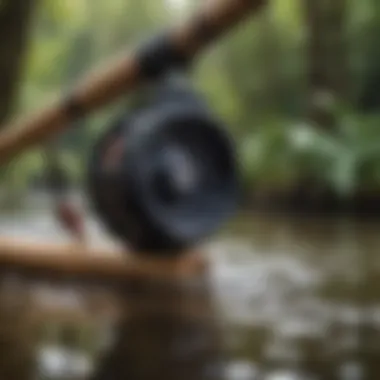
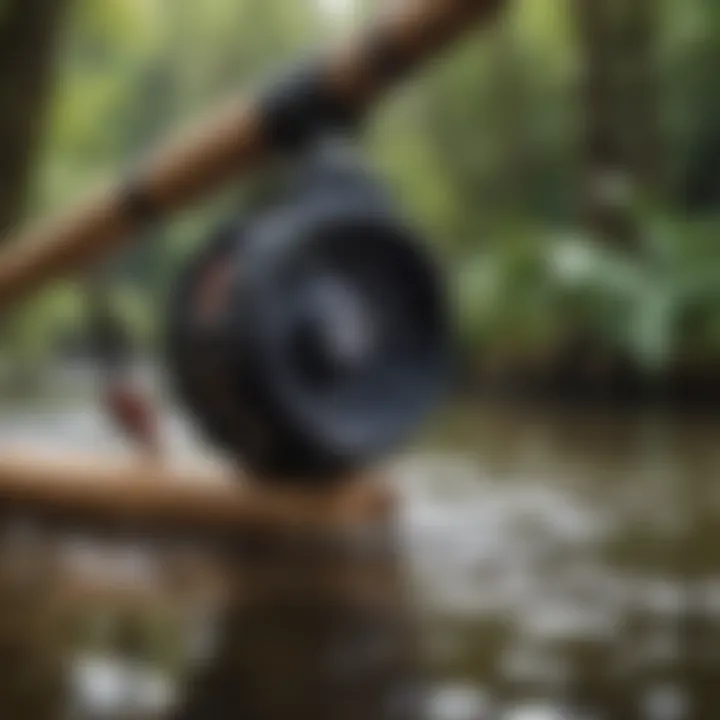
Today, the resurgence of sling shot fishing can be attributed to a growing community of enthusiasts eager to embrace both the practicality and the thrill of this approach. Additionally, social media platforms, such as Reddit, have played a pivotal role in dispersing knowledge and experiences, allowing anglers to share techniques, successful catches, and tips alike.
The Mechanics of Sling Shot Fishing
The mechanics of sling shot fishing stand at the crossroads of technique and strategy. Understanding these mechanics is not only crucial to mastering the art but also impacts how effectively one can engage with various aquatic environments. Grasping the nuances of sling shot fishing allows enthusiasts to optimize their chances of success while navigating differing conditions, be it wind or water currents. Furthermore, empowering anglers with a solid understanding of the mechanics can lead to a more fulfilling experience on the water, reinforcing the balance between skill and science.
Basic Principles
The basic principles of sling shot fishing revolve around a few essential elements: positioning, tension, and release. Each of these components contributes towards an effective casting technique. First, proper positioning enables the angler to maximize their range and accuracy. Standing at an appropriate distance from the waterbody allows for effective targeting without disturbing the fish habitat.
Tension is the next critical aspect, as it essentially translates to the force one builds before release. The goal here is to find a sweet spot between not having enough tension to cast effectively and having too much to control precision. Finally, the release should be swift yet controlled, ensuring the bait or lure travels along the desired trajectory. Mastering these basic principles sets the stage for an engaging fishing session, making them fundamental to both novice and experienced anglers.
Gear and Equipment
When it comes to sling shot fishing, the right gear and equipment can make a world of difference in performance and success. Prioritizing quality and compatibility with your fishing conditions lays the groundwork for a rewarding day on the water, elevating the overall fishing experience.
Types of Sling Shots
The types of sling shots vary widely, but what stands out is the tradition of craftsmanship in their design. This aspect is particularly exciting as contemporary sling shots incorporate innovative materials without losing sight of their heritage. For instance, a wooden sling shot offers a nostalgic feel, while composite materials enhance durability and precision.
One key characteristic to consider is the adjustable bands often found in modern sling shots. They allow for finer tension management, which can cater to different fishing environments and skill levels. However, keep in mind that while these features offer advantages, they may require regular maintenance to ensure optimal performance over time.
Fishing Line Selection
Fishing line selection serves as the connecting thread between the angler and their catch. The right choice can significantly influence the effectiveness of sling shot fishing. A popular option among seasoned anglers is braided line. Known for its strength-to-diameter ratio, it allows for impressive durability without sacrificing sensitivity.
The unique aspect of braided lines is their thinner profile, which enables longer casts and better casting accuracy. Still, it’s essential to note that this type of line may not be as forgiving as monofilament lines in heavier snag situations, which can lead to potential losses.
Bait and Lure Options
Bait and lure options in sling shot fishing are where creativity meets practicality. Options vary from live bait like minnows to artificial lures designed to mimic local prey. Choosing the right bait is central to enticing fish, as their feeding habits can shift based on weather or time of day.
For instance, using vibrant lures can mimic the natural color and movement of potential prey, which can lead to more bites. However, it's worth mentioning the challenge of ensuring that the chosen bait matches the species targeted; different fish will be attracted to varied stimuli. This adds an exciting layer of strategy to sling shot fishing, encouraging anglers to remain flexible and adaptable.
"Successful sling shot fishing hinges not only on the right gear but also on the angler's ability to adapt to the ever-changing environment of the waters."
In summary, the mechanics of sling shot fishing revolve around its principles, gear, and equipment. These elements define not just the technique itself, but also how fishermen engage with their surroundings. Understanding and mastering these aspects can significantly enhance the fishing experience.
Techniques for Successful Sling Shot Fishing
When it comes to sling shot fishing, mastering the techniques is crucial. These skills not only elevate your fishing experience but also increase the chances of a fruitful outing. The techniques outlined here are designed to enhance both precision and effectiveness, thereby turning a simple activity into a rewarding adventure.
Casting Techniques
Casting is where the magic starts in sling shot fishing. It's not merely about flinging a line into the water. It involves a combination of strategy, skill, and a real understanding of your environment. Each cast opens up different possibilities, making it essential to grasp these techniques.
Wind Considerations
Wind can play a significant role when it comes to sling shot fishing. Understanding how it impacts your cast can determine success or failure. A strong gale may alter your trajectory unexpectedly.
Key characteristics of wind considerations involve the direction and strength of gusts. This understanding can be a game changer on a breezy day.
Often, anglers recommend casting with the wind, as it aids in achieving longer distances. However, when fighting against the wind, accuracy becomes paramount.
The unique feature here is the adjustment of your angles. You might find that you need to lean into the wind, altering your stance slightly to keep the cast straight. In some instances, this can lead to larger catches. But not every environment offers favorable wind conditions, so it is worth practicing at various locations.
Distance Management
Distance management is vital in sling shot fishing, particularly when targeting species that lurk farther from the shoreline or dock. This skill doesn’t just pertain to how far you can cast but also to how you aim at your target. The key characteristic of distance management lies in controlling the power and angle of your cast. Understanding the limitations of your gear supports effective distance management. Too much power can cause a backlash, while too little can leave you short.
One unique feature of this technique is utilizing landmarks or buoy markers as distances for guidance. Most experienced anglers will tell you to visualize a target when casting. This might sound simple, but honing in on specific points can drastically improve accuracy over time. However, distances can vary markedly between locations, so be mindfull of that.
Targeting Species
Targeting species is another layer of strategy in sling shot fishing. Knowing what you aim for can drastically influence your success rate. Different species require variations in approach, bait, and technique.
Freshwater Species
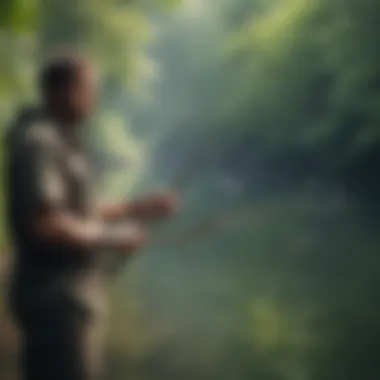
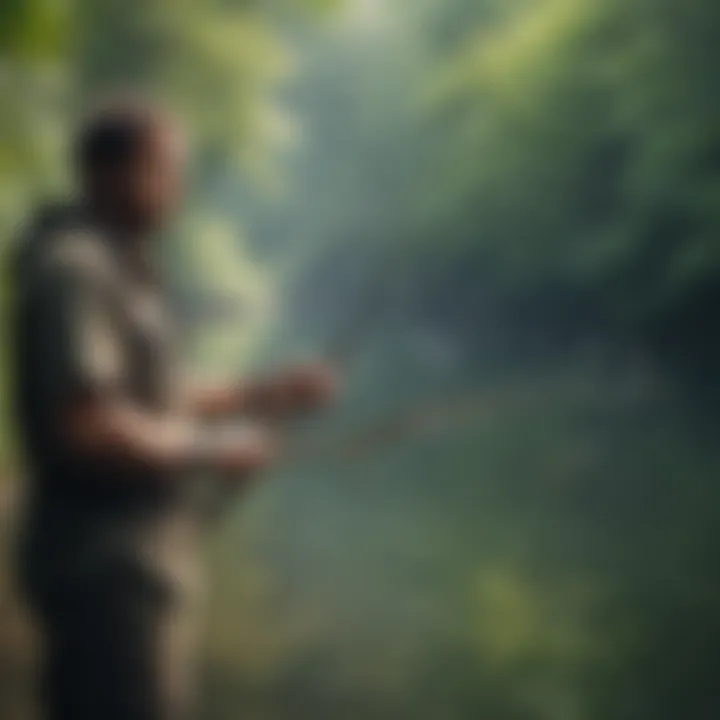
Freshwater species, such as bass and catfish, are abundant and can be frequent targets for sling shot fishing. The secret here is understanding their habitats. They tend to hide around underwater structures like rocks and fallen trees. A major advantage of targeting these species is their accessibility; waterways are often closer to urban areas. This makes it easier for anglers to practice their skills without traveling far.
What’s unique about freshwater species in sling shot fishing is the use of specific bait types. Live bait such as worms or artificial lures can be very effective. However, some fishermen find that catch and release practices truly enhance their experience, adding a layer of responsibility to the sport.
Saltwater Species
On the other hand, saltwater species like mackerel or snapper require a distinct approach. The ocean presents varying currents, depths, and temperatures, making it essential to adapt your tactics. Saltwater fishing often involves longer casts due to deeper waters.
The key characteristic of targeting saltwater species is versatility. The bait selection and fishing gear may differ widely, so familiarity with various techniques is needed. A notable advantage here is the potential for larger fish, which can be thrilling for any angler. Nevertheless, this also brings its challenges—even more gear considerations and ecological implications.
"Successful sling shot fishing is not just about the catch; it's an ongoing exploration of technique and environment."
Epilogue
Both casting techniques and species targeting are essential in sling shot fishing. They are symbiotic, each enhancing the other. As you master the wind conditions and distance management, you’ll find yourself well-equipped to tackle both freshwater and saltwater adventures. The variety and depth of experience ensure that each outing can be unique, pushing you to hone your skills further.
Benefits of Sling Shot Fishing
Sling shot fishing, while perhaps not as mainstream as its counterparts, offers a myriad of advantages that resonate well with both casual anglers and seasoned veterans. Embracing this unique method not only enhances the experience in the water but also contributes positively to the environment and a fisher's personal skill set. This section illustrates the importance of these benefits and why they matter to a diverse range of fishing enthusiasts.
Versatility Across Environments
One of the standout qualities of sling shot fishing is its remarkable adaptability. Whether you’re by a placid lake or the relentless ocean shoreline, this technique shines through. It can be applied to varied environments, allowing fishermen to target a spectrum of species without relying solely on traditional gear. For instance:
- Freshwater: In lakes and streams, anglers can sling a baited hook into hard-to-reach areas where fish hide, like under overhanging branches or behind rocks.
- Saltwater: The approach also works when casting into surf or tidal zones, where casting weight can often be cumbersome with regular rods.
The maneuverability of a sling shot can also help fishermen navigate tighter spots, making it easier to get that perfect cast. Thus, flexibility becomes a hallmark of sling shot fishing, giving enthusiasts more opportunities to hook their target.
Enhancing Skill Development
Utilizing a sling shot for fishing isn't merely about catching fish; it's also an excellent avenue for honing one’s skills. The art requires a unique blend of coordination, precision, and adaptability, providing anglers a gradual learning curve that can be both challenging and rewarding. Key skills developed include:
- Hand-eye coordination: You'll find yourself needing to focus intently on both the slingshot's alignment and the fish's movements.
- Timing and judgment: Knowing when to let go of the shot is just as crucial as how far to pull back. The learning process improves quick decision-making and enhances the overall experience in the water.
- Innovative thinking: Each session offers a chance to troubleshoot issues like wind direction and the physics of the cast. Fishermen develop a deeper understanding of their environment and the behavior of aquatic species through trial and error.
Improving these fundamental skills not only benefits sling shot fishing but can enhance one's adaptability and performance across different fishing methods.
"Sling shot fishing encourages innovative thinking and quick decision-making, essential skills for any angler."
In summary, the benefits of sling shot fishing reach beyond mere fish-catching enjoyment. From increased versatility in approach to the substantial improvement of core fishing skills, this method proves to be valuable for fostering a comprehensive fishing experience, essential for watersports enthusiasts of all levels. It challenges anglers to rethink traditional fishing practices while nurturing a proactive and engaged mindset when approaching the waters.
Ecological Considerations in Sling Shot Fishing
Sling shot fishing, while a thrilling and effective method for catching fish, brings forth a series of ecological considerations that are paramount for its sustainable use. These considerations help ensure the health and longevity of fish populations, as well as the ecosystems in which they reside. In the broader context of environmental stewardship, understanding these elements is crucial for fishers who are keen on maintaining the integrity of natural waters.
Impact on Fish Populations
The use of sling shots for fishing can have varying effects on fish populations, depending on techniques, target species, and frequency of fishing trips. When practiced responsibly, sling shot fishing has the potential to maintain or even enhance these populations. However, overfishing can lead to depletion, particularly in more vulnerable species. It’s important for anglers to be mindful of the balance of aquatic ecosystems. According to studies, a species like the striped bass can be negatively impacted by excessive catch rates if not managed properly.
Additionally, fish populations can be influenced by the size and type of bait used. For instance, large baits can sometimes entice smaller fish, impacting their population and growth rate. Reams of research suggest that managing catch limits and sizes is necessary to ensure that fish populations are not broadly disrupted. Hence, understanding local fish dynamics is a vital cog in successful and responsible sling shot fishing.
Sustainable Practices
Sustainable practices are essential to maintain both the fish populations and the habitats they depend on. Here are two critical aspects of sustainable sling shot fishing:
Catch and Release Techniques
Catch and release techniques are an integral part of sustainable fishing. This approach emphasizes the careful handling of fish to minimize stress and injury, increasing their chances of survival after release. The primary characteristic of catch and release practices includes using barbless hooks, which make it easier to safely extract hooks without causing significant harm. This is particularly popular among anglers who wish to conserve species that are under pressure.
A unique aspect of this technique is the timing and method of releasing the fish. It advocates for minimizing the time a fish spends out of water and handling them with wet hands to protect their skin. This practice not only preserves the fish numbers but also contributes to the overall health of aquatic ecosystems, ensuring that fish populations remain robust.
Habitat Conservation
Habitat conservation requires an understanding that preserving the natural environments where fish thrive is as important as the act of fishing itself. This practice emphasizes maintaining clean waters and protecting breeding grounds. A critical aspect is the restoration of areas that might be damaged due to pollution, habitat destruction, or manmade influences.
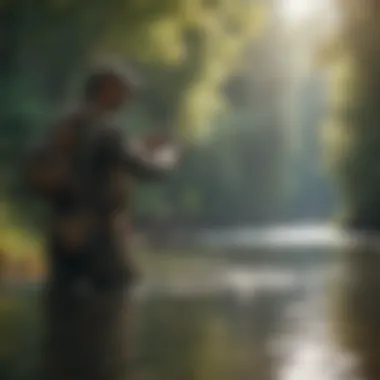
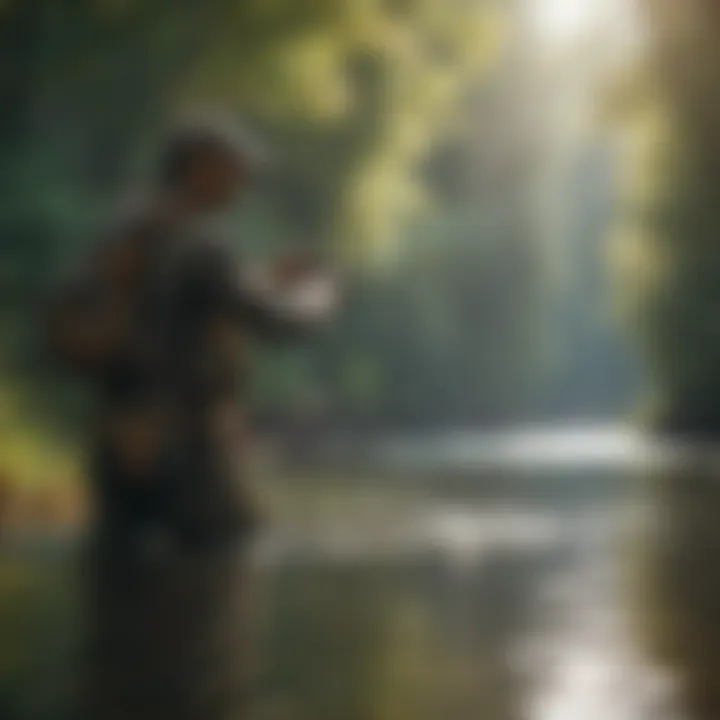
The unique feature of habitat conservation lies in its holistic approach to ecosystem management. It seeks to protect not just the fish themselves but the entire aquatic habitat, considering the intricate interdependencies within ecosystems. One must appreciate that engaging in sling shot fishing should always involve a reverence for the environment, understanding that healthy habitats yield sustainable angling opportunities.
"A responsible angler recognizes that every cast not only seeks to catch a fish but also to sustain the delicate balance of nature."
By adopting these sustainable practices, anglers ensure that their approach to sling shot fishing is not just about immediate gratification but about nurturing a thriving, vibrant fishing culture for generations to come. These considerations not only serve as a foundation for responsible fishing but also contribute to a community that values the environment.
Sling Shot Fishing in Different Locations
Understanding where to practice sling shot fishing is vital for maximizing success and enjoyment. Different locations offer unique challenges and opportunities. Each setting has a distinct ecosystem, so knowing how to read these waters may increase your catch rate. Moreover, different environments can affect not only the types of fish available but also the techniques you'll need to employ.
Best Freshwater Sites
Freshwater locations present an intriguing set of conditions well-suited for sling shot fishing. Rivers, lakes, and ponds vary in structure and flow, shaping the experience.
- Small Lakes: Often teeming with species such as trout and panfish, small lakes are ideal for both beginners and seasoned anglers. The proximity to the shore allows for accurate and controlled casting. Look for spots where aquatic vegetation meets open water; fish love to hang around there.
- Slow-Moving Rivers: Rivers with a gentle current are excellent for sling shot fishing. Casting upstream and allowing your bait to drift towards the fish can mimic natural prey movement. Important factors include knowing the depth and having a good feel for where the fish are likely resting.
- Ponds with Structure: Ponds that have logs or rocks submerged provide hiding places for fish. These locales often yield more bites, so casting near these areas can significantly improve your chances.
Top Coastal Areas
When it comes to coastal areas, sling shot fishing transcends mere enjoyment, evolving into a holistic experience that embraces the saltwater landscape. This environment necessitates a different approach due to varying tides and weather conditions.
- Estuaries: Mixing fresh and saltwater, estuaries are fantastic spotting grounds for species like striped bass and flounder. The constantly changing waters require adaptability in both target species and techniques.
- Rocky Shorelines: Fishing from rocky shores can prove fruitful, especially early in the morning or late in the evening. The waves crashing against the rocks create natural bait motion, attracting fish that search for food. Here, precision is key since the rocky terrain can easily snag on lines or lures.
- Surf Zones: Fishing right from the surf zone adds an exciting challenge. The unpredictability of the breaking waves means you must adjust your casting techniques accordingly. Find openings in the waves to release your sling shot casting, and let your bait sink in the turbulent water to draw in curious fish.
"Success in sling shot fishing isn't just about skill. It's about adapting your tactics to fit the location."
In summary, exploring different freshwater sites and coastal areas allows anglers to hone their skills adaptively while maximizing their chances for a successful catch. Familiarizing oneself with these environments is just as crucial as mastering the mechanics of sling shot fishing, making this experience not only about fishing but about understanding nature intimately.
Safety and Regulations
In the world of sling shot fishing, embracing safety and understanding local regulations is paramount. These elements do not only protect the angler but also the environment and fish populations. Ignoring safety measures or local laws can lead to serious accidents and ecological disruptions. By maintaining awareness and adhering to regulations, anglers can ensure a responsible and enjoyable fishing experience.
Safety Measures
When it comes to safety in sling shot fishing, there are several critical aspects to consider. Knowing your environment is essential. Check the area for potential hazards—sharp rocks, unstable banks, or deep waters can pose dangers. Wearing a life jacket is always advisable, especially when fishing near water bodies that exhibit unpredictable currents or hazardous conditions.
Additionally, using high-quality gear can make a world of difference. Outdated or defective equipment can lead to accidents, so make sure your sling shot and fishing line are in top shape. Additionally, wearing gloves can help protect the hands from cuts when handling bait or dealing with fish.
It's also wise to inform someone about your fishing plan. Whether it's a friend or family member, letting them know where you'll be heading and when to expect you back adds an extra layer of safety. This way, if anything goes awry, someone can raise the alarm promptly. Here’s a quick recap of vital safety measures:
- Wear a life jacket - Always protect yourself in uncertain waters.
- Inspect your gear - Use reliable, sturdy fishing equipment.
- Stay aware of your surroundings - Avoid fishing in dangerous or risky areas.
- Inform someone of your whereabouts - Safety in numbers, even if it’s just in spirit.
Local Fishing Regulations
Local fishing regulations play a foundational role in ensuring that sling shot fishing is conducted ethically and sustainably. These rules vary by region, and they can outline everything from the legal sizes and limits of fish you can catch, to the seasons in which certain species are protected.
It’s crucial to familiarize yourself with regulations specific to your fishing locale. For instance, some areas may have specific water bodies where sling shot fishing is permitted, whereas others may restrict the technique to protect vulnerable fish populations. Fishing during designated seasons means that you are aiding in the conservation efforts of certain species.
Additionally, following local regulations often involves practicing good stewardship. Many regions enforce catch-and-release policies to maintain fish populations. Knowing these rules can also enhance your fishing experience, as it builds respect for the environment and fosters community support for fishing activities. Here are some key points to keep in mind:
- Consult local fishing guides - Always look up resources pertaining to specific areas.
- Understand catch limits - Adhere to the regulations regarding size and number of fish.
- Follow seasonal restrictions - Respect the breeding cycles of various species.
Always be informed, educated, and respectful of the places you fish in. This not only ensures your safety but guarantees the continuity of the sport for generations to come.
End
Sling shot fishing isn't simply a method; it's a confluence of art and science that invites practitioners to innovate while engaging with the natural world. As anglers navigate the waters wielding their slingshots, they engage not only in a recreational pursuit but also in a dance with nature's rhythms. The future of this unique fishing technique appears promising, especially as both technology and ecological understanding evolve.
The Future of Sling Shot Fishing
The prospects for sling shot fishing can be viewed through several lenses. Technological advancements can pave the way for greater precision and efficiency. Imagine slingshots equipped with smart targeting systems, allowing even novice fishers to achieve impressive distances and accuracy. Digital apps could also emerge, providing real-time data about fish populations and optimal conditions, effectively serving as an angler's best mate on the water.
In addition to tech enhancements, there’s a growing awareness of the environmental impact that fishing can have. Fishermen must consider sustainability, and sling shot fishing can lead the way with non-invasive practices. The low-impact nature of this technique aligns with conservation efforts, asserting itself as a model for responsible fishing. By utilizing catch and release practices and advocating for habitat conservation, the sling shot fishing community can help preserve aquatic ecosystems.
Key considerations for the future include:
- Increasing collaboration within fishing communities to share techniques and knowledge.
- Emphasizing the importance of sustainable practices in educational platforms.
- Harnessing technology to enhance the fishing experience while minimizing ecological footprints.
"Innovation and responsibility must go hand in hand to ensure the legacy of sling shot fishing for future generations."
As awareness grows, the community of sling shot fishers will likely see an expansion in their ranks, spurred by adventure seekers and sport enthusiasts alike. This cheery trend can lead to more visibility, ultimately creating opportunities for competitions, workshops, and collaborations.
Thus, as we look to the horizon, the blend of tradition and innovation marks the pathway forward for sling shot fishing, solidifying its place in both leisurely pastimes and ecological stewardship. Whether you’re a seasoned angler or a curious beginner, the future beckons you to pick up a slingshot and engage with the water in a new, exciting way.







